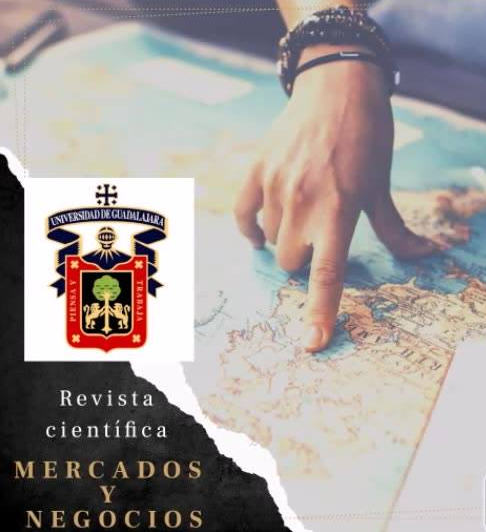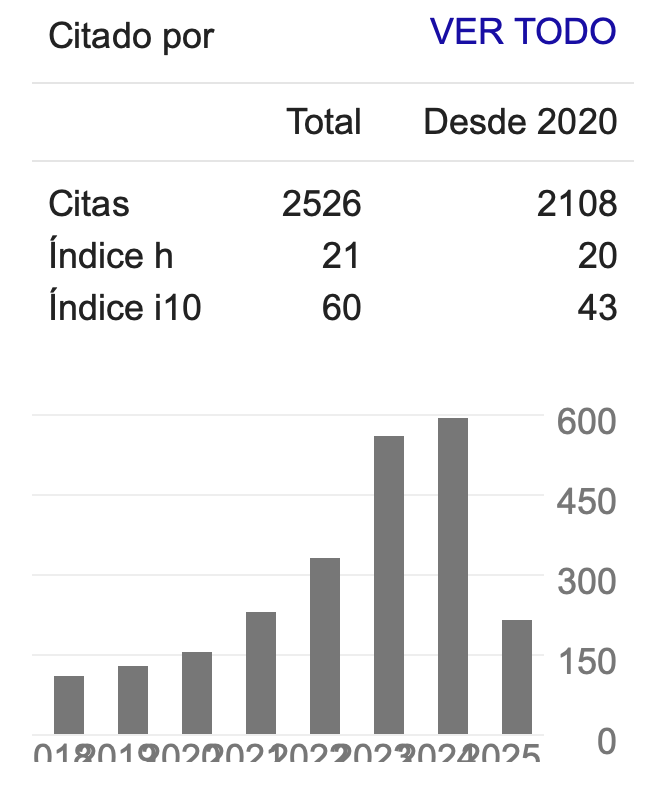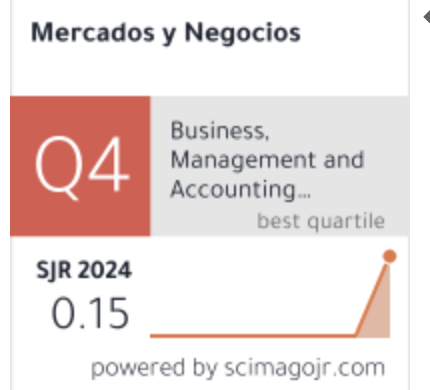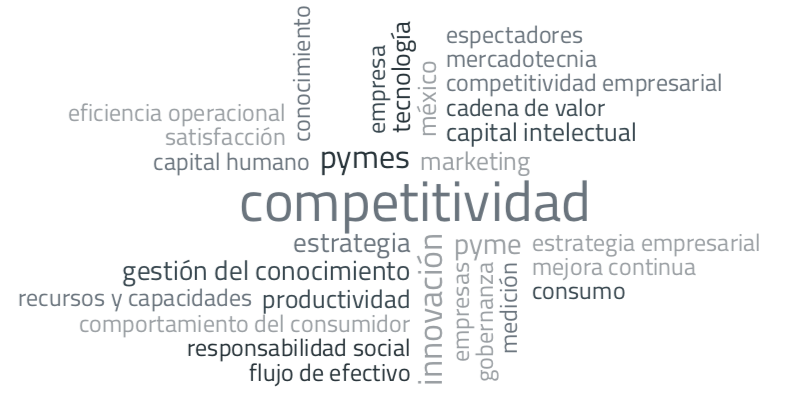Trademark Influence and Brand Experience on Consumer's Loyalty to Fast Fashion Brands
DOI:
https://doi.org/10.32870/myn.vi50.7698Keywords:
Brand love, Brand experience, Brand loyaltyAbstract
This work investigates the relationship between Brand love and Brand Experience with Brand Loyalty in fast fashion consumers in the ZMG. A quantitative instrument was built from whose answers it is intended to know if there is a positive relationship between the concepts of Love and Brand Experience and Brand Loyalty. From the results obtained, it sought to know the characteristics of the market, as well as the purchasing behavior and which of the brands studied is a favorite. The ANOVA was used to check whether the hypotheses were approved or rejected and to know the most critical consumer dimensions when developing loyalty to a fast fashion brand. The results reveal a positive relationship between the Brand Loyalty and Brand Experience and Brand Love scales. Therefore, the 2 Hypotheses presented for this study were accepted.References
Aaker, D. & Joachimsthaler, E. (2007) Cómo Construir Marcas Líderes. Porto Alegre: Bookman.
Aaker, D. A. (2004). Leveraging the corporate brand. California Management Review, 46(3), 6-18.
Abdelmeguid, A., Afy-Shararah, M., & Salonitis, K. (2022). Investigating the challenges of applying the principles of the circular economy in the fashion industry: A systematic review. Sustainable Production and Consumption, 32, 505-518.
Ahuvia, A. C., (2005). Beyond the extended self: loved objects and consumer’s identity narratives. Journal of Consumer Research, 32(1), 171–184. https://doi.org/10.1086/429607
Ahuvia, A., & Carroll, B. (2006). Some antecedents and outcomes of brand love. Marketing Letters, 17(2), 79-89. https://doi.org/10.1007/s11002-006-4219-2
Ahuvia, A., Bagozzi, R. & Batra, R. (2012). Brand Love. Journal Of Marketing, 76(2), 1-16. https://doi.org/10.1509/jm.09.0339
Allen, J., Sahoury, N., Whang, Y. & Zhang, H. (2004). Falling in love with a product: the structure of a romantic consumer-product relationship. Advances in Consumer Research, 31, 320–327.
AMA (2023). Branding. American Marketing Association. Link: https://www.ama.org/topics/branding/
Ángeles, E. & Münch, L. (2009). Métodos y técnicas de investigación. México: Trillas.
Bae, B.R. & Kim, S.E. (2023). Effect of brand experiences on brand loyalty mediated by brand love: the moderated mediation role of brand trust. Asia Pacific Journal of Marketing and Logistics, Vol. ahead-of-print No. ahead-of-print. https://doi.org/10.1108/APJML-03-2022-0203
Brakus, J.J., Schmitt, B. & Zarantonello, L. (2009). Brand experience: What is it? How is it measured? Does it affect loyalty? Journal of Marketing, 73(5), 52-68.
Brooksworth, F., Mogaji, E., & Bosah, G. (2022). Fashion marketing in emerging economies: An introduction. In Fashion Marketing in Emerging Economies Volume I: Brand, Consumer and Sustainability Perspectives (pp. 3-20). Cham: Springer International Publishing.
Bruce, M. & Daly, L. (2006). Buyer behaviour for fast fashion. Journal of Fashion Marketing and Management: An International Journal, 10(3), 329-344. https://doi.org/10.1108/13612020610679303
Byun, S. & Sternquist, B. (2008). The antecedents of in-store hoarding: measurement and application in the fast fashion retail environment. The International Review of Retail, Distribution and Consumer Research, 8(2), 133–147. https://doi.org/10.1080/09593960701868241.
Chandon, P., Laurent, G. & Wansink, B. (2000). A benefit congruency framework of sales promotion effectiveness. Journal of Marketing, 64, 65–81.
Delgado, M. & Fernández, E. (2011). Marcas de Experiencia: Marcando la Diferencia. Estudios Gerenciales, 27(121), 59-77.
Esa, N. (9 de noviembre de 2012). ¿Qué es Fast Fashion? Fashion Blog México. http://fashionblogmexico.com/fast-fashion/
Figueiredo, G., Freddo, A., João, B. & Maiochi, A. (2010). Internacionalización en la industria de la moda: el caso Zara. Revista Galega de Economía. 19(2), 1-23.
Forbes. (27 de julio de 2020). Zara. Forbes. Link: http://www.forbes.com/companies/zara/
Fournier, S. (1998). Consumers and their brands: developing relationship theory in consumer research. Journal of Consumer Research, 24, 343–373.
Frías, N. D. (2014). Apuntes de SPSS: Análisis de fiabilidad de las puntuaciones de un instrumento de medida. Alfa de Cronbach: Un coeficiente de fiabilidad, Universidad de Valencia.
Fullerton, R. & Low, G. (1994). Brands, brand management, and the brand manager system: A Critical-Historical Evaluation. Journal of Marketing Research. 31, 173-190.
García, S. (2012). El fenómeno de la moda rápida. 24 Horas. Link: http://www.24-horas.mx/el-fenomeno-de-la-moda-rapida/
Gobe, M. (2010). Emotional Branding: The New Paradigm for Connecting Brands to People. New York: Allworth Press.
González, E. M., Orozco, M. M., & Barrios, A. (2011). El valor de la marca desde la perspectiva del consumidor. Estudio empírico sobre preferencia, lealtad y experiencia de marca en procesos de alto y bajo involucramiento de compra. Contaduría y administración, (235), 217-239.
Goulart, J., Oliveira, M., Santino, F. & Vinhal, F. (2014). A relação entre o amor à marca e experiência com a marca, e sua influência sobre a lealdade: uma análise no setor de celulares no brasil. Anais do III SINGEP e II S2IS.
Guercini, S. (2001). Relation between branding and growth of the firm in new quick fashion formulas: analysis of an Italian case. Journal of Fashion Marketing and Management, 5(1), 69-79. https://doi.org/10.1108/EUM0000000007280
Haigood, T. (2001). Deconstructing Brand Personality. American Marketing Association, 12, 327-328. https://www.tib.eu/en/search/id/BLCP%3ACN041009949/Deconstructing-Brand-Personality/
Hirschman, E. & Holbrook, M. (1982). Hedonic consumption: emerging concepts, methods and propositions. Journal of Marketing. 46(3), 92–101.
Holmlund, M., Hagman, A., & Polsa, P. (2011). An exploration of how mature women buy clothing: empirical insights and a model. Journal of Fashion Marketing and Management: An International Journal, 15(1), 108-122.
Iacobucci, D. (2002), Marketing según Kellogg. España: Vergara.
Jones, D. & Shaw, E. (2005) A history of schools of marketing thought. Marketing Theory, 5(3), 239-281.
Kim, H. M., Abbas, J., Haq, M. Z. U., Lee, J., & Hwang, J. (2023). Differences between robot servers and human servers in brand modernity, brand love and behavioral intentions in the restaurant industry. Asia Pacific Journal of Marketing and Logistics, 35(7), 1774-1788.
Kohli, H.S., Khandai, S., Yadav, R., & Kataria, S. (2021). Brand Love and Brand Hate: Integrating Emotions into Brand-Related Experiences and Loyalty. Journal of International Commerce, Economics and Policy, 12(02), 2150007.
Kotler, P., & Keller, K. (2012). Dirección de marketing. México: Pearson Educación.
Lang, C., Armstrong, C. M., & Brannon, L. A. (2013). Drivers of clothing disposal in the US: An exploration of the role of personal attributes and behaviours in frequent disposal. International Journal of Consumer Studies, 37(6), 706-714.
MacInnis, D., Park, C. & Thomson, M. (2005). The ties that bind measuring the strength of consumers emotional attachment to brands. Journal of Consumer Psychology, 15(1), 77–91.
Martin, W & Taylor, K. (30 de agosto de 2017). Meet the reclusive Spanish billionaire who just beat out Bill Gates to become the richest person in the world. Business Insider. Link: https://www.businessinsider.com/who-is-fashions-richest-man-zara-founder-amancio-ortegas-2017-7
McKenzie, D., Schargrodsky, E., & Cruces, G. (2011). Buying less but shopping more: The use of nonmarket labor during a crisis [with comment]. Economia, 11(2), 1-43.
McSpirit, K. (1998). Sustainable consumption: Patagonia's buy less, but buy better. Corporate Environmental Strategy, 5(2), 32-40.
Moore, C. M. & Fernie, J. (2004). Retailing within an international context. En Bruce, M., Moore, C. y Birtwistle, G. (eds.) International Retailing: A Case Study Approach. Oxford: Elsevier.
Moore, K. & Reid, S. (2008). The birth of brand: 4000 years of branding history. Business History. 50(4), 419-432.
Morgan, L. R., & Birtwistle, G. (2009). An investigation of young fashion consumers' disposal habits. International journal of consumer studies, 33(2), 190-198.
Morrison, S., & Crane, F. G. (2007). Building the service brand by creating and managing an emotional brand experience. Journal of Brand Management, 14(5), 410–421.
Na, M., Rong, L., Ali, M. H., Alam, S. S., Masukujjaman, M., & Ali, K. A. M. (2023). The Mediating Role of Brand Trust and Brand Love between Brand Experience and Loyalty: A Study on Smartphones in China. Behavioral Sciences, 13(6), 502.
Nicolau, A. I., Musetescu, A., & Mionel, O. (2014). Stages in the evolution of marketing as a discipline. Knowledge Horizons. Economics, 6(2), 166.
Ochoa, C. (23 de febrero de 2015). What sample size do I need?. Netquest. Link: https://www.netquest.com/blog/en/what-sample-size-do-i-need
Ong, C. H., Lee, H. W., & Ramayah, T. (2018). Impact of brand experience on loyalty. Journal of Hospitality Marketing & Management, 27(7), 755–774. https://www.tandfonline.com/doi/full/10.1080/19368623.2018.1445055
Prentice, C., Wang, X., & Loureiro, S. M. C. (2019). The influence of brand experience and service quality on customer engagement. Journal of Retailing and Consumer Services, 50(1), 50–59.
Robertson, J., Botha, E., Ferreira, C., & Pitt, L. (2022). How deep is your love? The brand love-loyalty matrix in consumer-brand relationships. Journal of Business Research, 149, 651-662.
Schmitt, B. (1999). Experiential marketing. Journal of Marketing Management, 15(1), 53-67.
Shahid, S., Paul, J., Gilal, F. G., & Ansari, S. (2022). The role of sensory marketing and brand experience in building emotional attachment and brand loyalty in luxury retail stores. Psychology & Marketing, 39(7), 1398-1412.
Spence, M., & Hamzaoui Essoussi, L. (2010). SME brand building and management: an exploratory study. European Journal of Marketing, 44(7/8), 1037-1054.
Tran, L. A. P., & Chang, T. Y. (2022). What makes customers loyal to an online booking brand? The effects of online brand experience and brand attachment. Journal of Quality Assurance in Hospitality & Tourism, 1-28
Villarejo, Á. F. (2002). Modelos multidimensionales para la medición del valor de marca. Investigaciones Europeas en Dirección y Economía de la Empresa, 8(3), 13-44.
Walls, A. R., Okumus, F., Wang, Y. & Kwun, D. J.-W. (2011). An epistemological view of consumer experiences. International Journal of Hospitality Management, 30(1), 10–21.
Zarantonello, L., & Schmitt, B. H. (2010). Using the brand experience scale to profile consumers and predict consumer behaviour. Journal of Brand Management, 17(7), 532–540.
Published
How to Cite
Issue
Section
License
Copyright (c) 2023 Ana Rocío Valenzuela Quintero, Luis Alberto Bellon Álvarez

This work is licensed under a Creative Commons Attribution-NonCommercial 4.0 International License.
Mercados y Negocios by Department of Mercadotecnia y Negocios Internacionales. University of Guadalajara is licensed under a License Creative Commons Attribution-NonCommercial 4.0 International.
The author retains the copyright.








